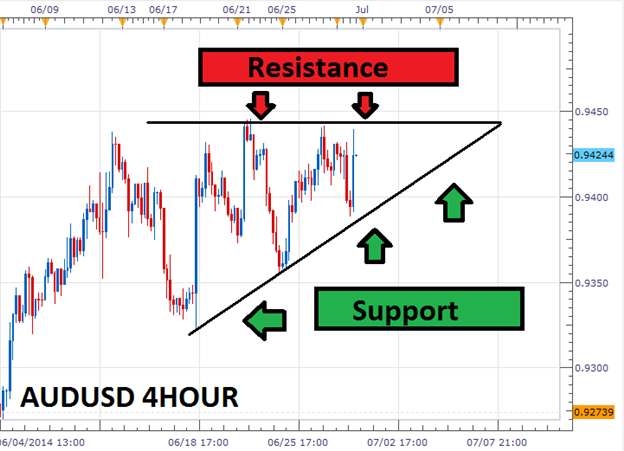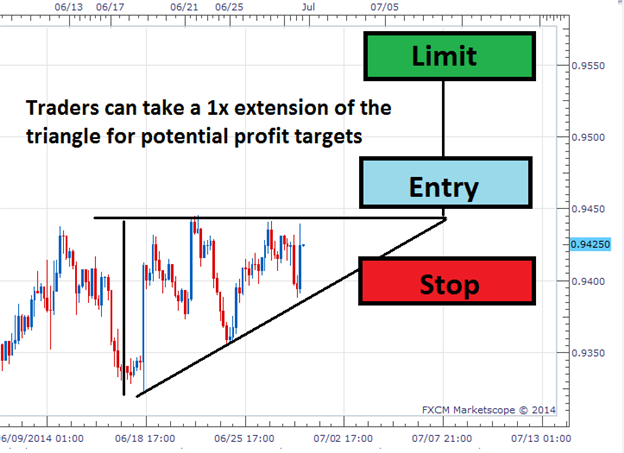The AUDUSD is trading in an ascending triangle
With the absence of a new high, traders can wait for a breakout
The triangle low and high can be used to extrapolate price targets
At some point, market trends will come to an end. These market transitions can be difficult for those that are used to using a directional market to make trading decisions. These market conditions don’t have to spell disaster for traders however. Those traders that can properly identify consolidating trading patterns will have a head start on adjusting their trading strategy accordingly. Today we will review trading one of the markets popular patterns, the ascending triangle. So let’s get started!
So, what exactly is an ascending triangle? An ascending triangle is a consolidating charting pattern, that can be identified by locating a currency pairs support and resistance levels. Below we can see what is known as an ascending triangle forming on the AUDUSD 4Hour chart. Resistance in this instance is seen as a horizontal line created due to the absence of a new high. At the same time, a line of support can be seen ascending as our lows increase in value. As price pressure builds in the triangle, traders can then begin to consider trading in anticipation of a market breakout.

Breakouts Using Entry Orders
Once a triangle pattern is found, we can then begin setting orders in preparation for a breakout. By using an entry order, a buy order can be placed over resistance in anticipation of the market moving through this value. The order will remain pending, and in the event that the market breaks through this selected point, an order to buy the AUDUSD will be triggered. Conversely, if price does not break resistance or price continues to consolidate, the order will not execute. In these instances, traders will have the option of deleting the order, and then proceeding to look for other market opportunities.

Managing Risk
Lastly, traders need to find a profit target and manage risk.
Traditionally, most traders look to use a 1:2 Risk/Reward ratio or
better when trading breakouts. This can be extrapolated by looking for
twice as many pips in profit as we are risking with our stop. One useful
tip is to extrapolate a profit target from the triangle. Traders can
measure the distance from the bottom support mark to the top of current
resistance. This value can then be added to the point of the breakout to
develop a profit target.



